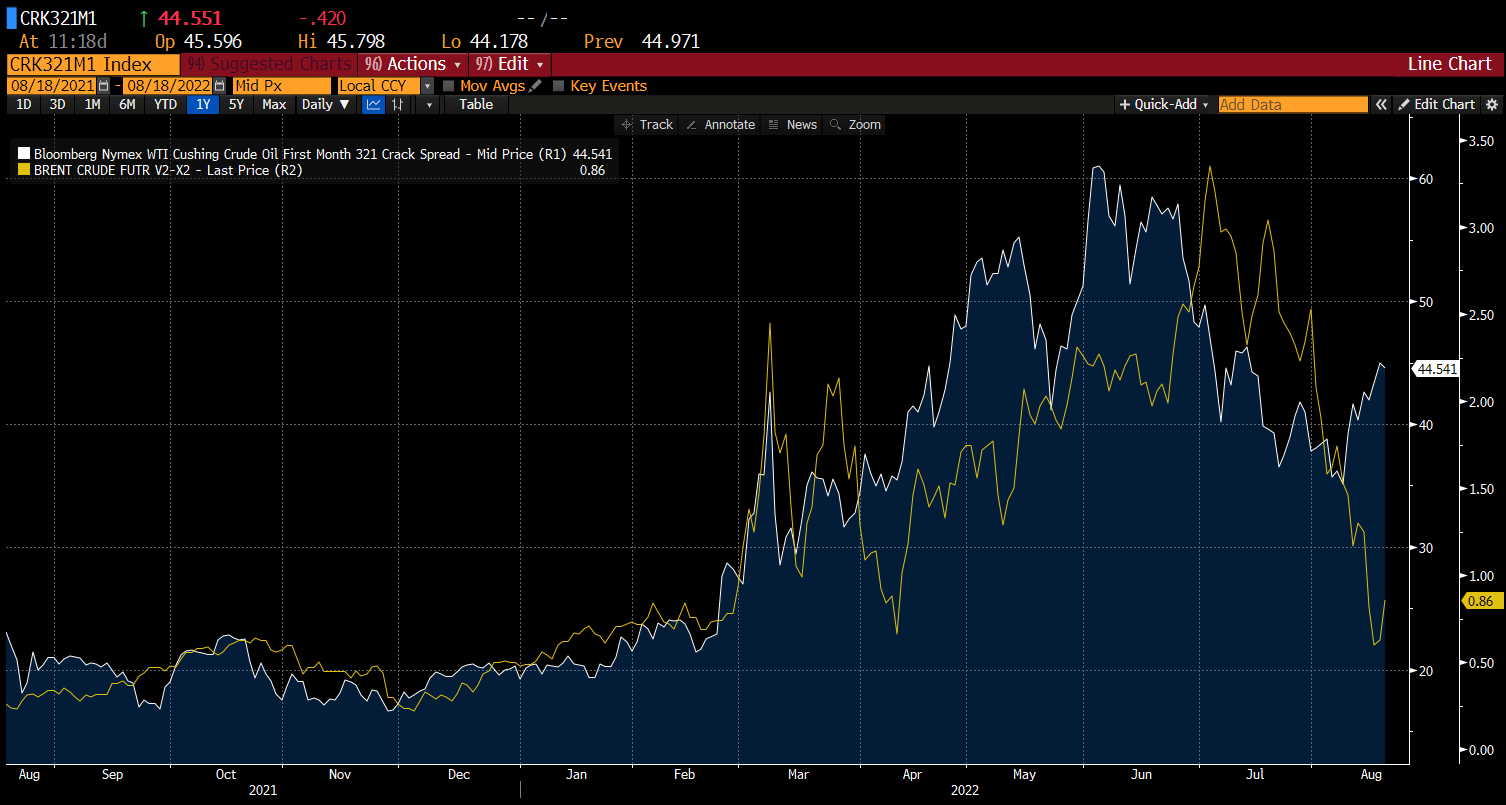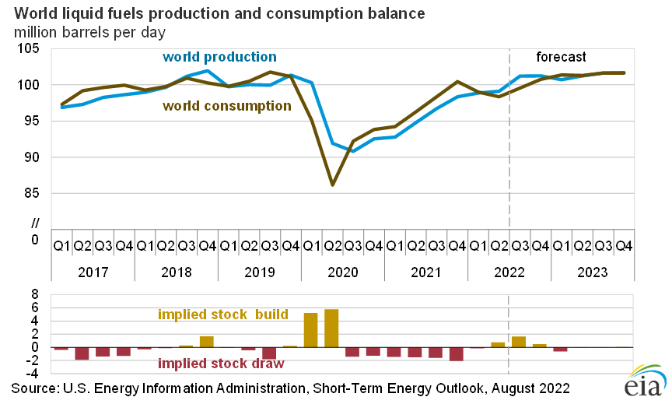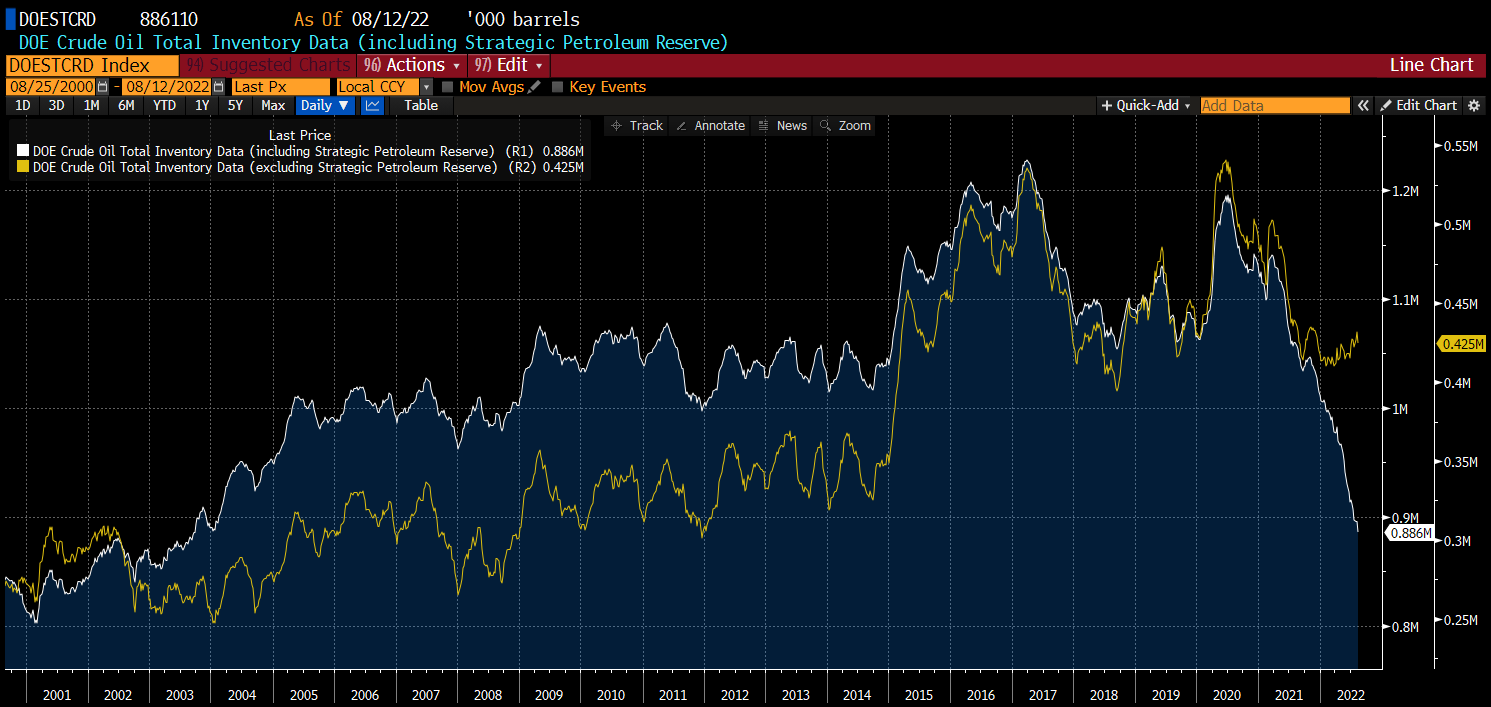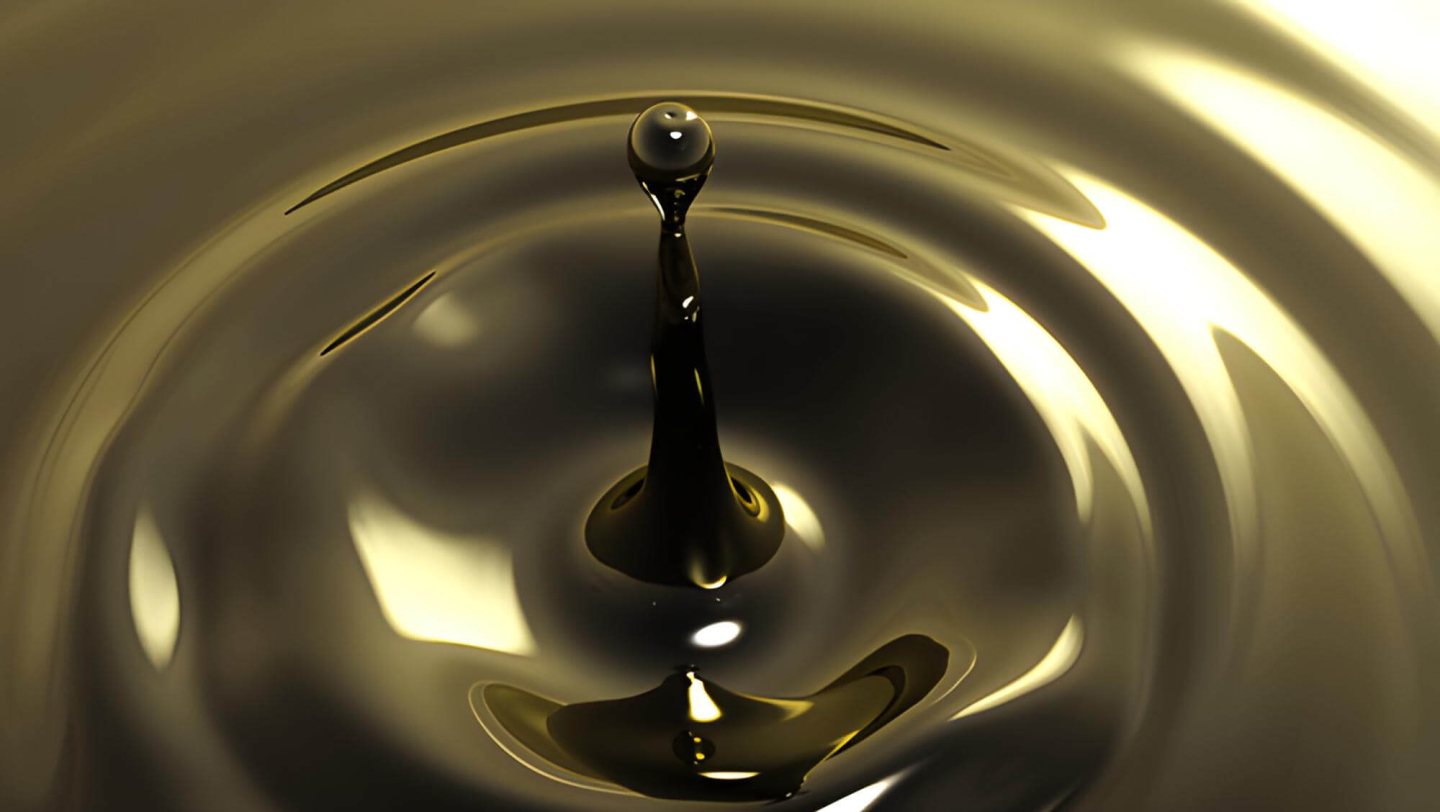Crude oil fell this week to the lowest levels since mid-February. Price fell around 30.0% from March high, when the market was concerned that Russia may halt oil transfers. It seems that the oil market has stabilized significantly from this time, although at this point we are dealing not only with supply concerns, but most of all about the demand, which may react negatively to a potential economic slowdown. Crude oil has been moving below $ 100 a barrel for two weeks. Will the current situation prevail? Or maybe in the autumn the prices will resume an upward rally?
The biggest concerns surround China!
China is currently the biggest unknown when it comes to global oil demand. Despite the strong increase in oil imports from Russia, oil processing in China is at its lowest since March 2020. Private refineries in China operate at only 62% and if covid restrictions return, processing may fall to the levels from March and February.
 Private refineries in China process less and less oil. A drop in processing capacity to 60% will point to weakening demand. Source: Bloomberg
Private refineries in China process less and less oil. A drop in processing capacity to 60% will point to weakening demand. Source: Bloomberg
Demand in the US doesn't look bad, but ...
Many comments emerged in recent weeks regarding the weakness of US demand. In fact, the implied demand was lower in the beginning of the summer, although this was also associated with extremely high gasoline prices. But when the price per gallon has dropped by as much as one dollar, fuel demand rebounded. On the other hand, the Fed may continue to move towards a stronger slowdown, which will also lower US demand.
 US implied gasoline demand returned above the 5-year average, but for the year as a whole, consumption was weaker. Source: Bloomberg
US implied gasoline demand returned above the 5-year average, but for the year as a whole, consumption was weaker. Source: Bloomberg
The physical market is no longer as tight as it was before
The crack spread, i.e. the difference between the price of the product and oil, has dropped significantly, although it remains around $ 40 per barrel. On the other hand, the spread between the nearest Brent oil contracts has dropped significantly (from $ 4 below $ 1), showing that temporary demand has weakened. The forward curve has flattened considerably, although it is still in the contango area. A marked flattening suggests that oil demand is beginning to decline.
 Crack spread and COCO spread show that physical demand has decreased significantly. Source: Bloomberg
Crack spread and COCO spread show that physical demand has decreased significantly. Source: Bloomberg
 The forward curve flattened significantly. Source: Bloomberg
The forward curve flattened significantly. Source: Bloomberg
EIA and Bloomberg expect oversupply in the second half of the year
Production growth from OPEC + is limited, but production from the United States and even Russia is increasing. With limited demand due to the economic slowdown, the market may face oversupply in the second half of the year!
 Bloomberg and EIA points out that implied stock build may reach 0.5-1 million barrels per day per quarter. Source: EIA
Bloomberg and EIA points out that implied stock build may reach 0.5-1 million barrels per day per quarter. Source: EIA
However, the demand does not necessarily have to be weak!
In the autumn and winter period, a decrease in demand is possible, but it may be offset by an increase in the consumption of oil in relation to gas. Many countries that have oil-fired power plants decide to restart their operations, as the price of gas in the equivalent of a barrel of oil is even 2-3 times higher, including the costs associated with emission permits. The so-called Gas-to-oil switching could generate as much as 1-5 million barrels per day of additional demand. In addition, it's worth remembering that from October onwards, the US is likely to stop releasing strategic oil reserves, which have fallen to their lowest levels in nearly 20 years! Without an additional 1 million barrels per day, commercial stockpiles may fell very sharply, which could lead to higher prices at the end of the year!
 Inventories, including strategic reserves, fell by 120 million barrels since the beginning of the year! Source: Bloomberg
Inventories, including strategic reserves, fell by 120 million barrels since the beginning of the year! Source: Bloomberg
What's next with prices?
Growing concerns about a potential slowdown or even a recession, problems in China could lead to oversupply on the market, which could push oil prices to even lower lows. On the other hand, it seems that the post-covid uptrend should be maintained. This is why the price should not fall below $ 85 a barrel. At the same time, rising demand and uncertainty regarding supply may push the price above $100 per barrel. However there is a chance that price will enter consolidation period around this level, as was the case in 2011-2014

Source: xStation5
Daily Summary: End of the week in the red, tech rally waning
🔝Silver Jumps 10% Weekly, up 120% YTD
Chart of the day - SILVER (12.12.2025)
Daily summary: SILVER at a new ATH, EURUSD at its highest since October
The content of this report has been created by XTB S.A., with its registered office in Warsaw, at Prosta 67, 00-838 Warsaw, Poland, (KRS number 0000217580) and supervised by Polish Supervision Authority ( No. DDM-M-4021-57-1/2005). This material is a marketing communication within the meaning of Art. 24 (3) of Directive 2014/65/EU of the European Parliament and of the Council of 15 May 2014 on markets in financial instruments and amending Directive 2002/92/EC and Directive 2011/61/EU (MiFID II). Marketing communication is not an investment recommendation or information recommending or suggesting an investment strategy within the meaning of Regulation (EU) No 596/2014 of the European Parliament and of the Council of 16 April 2014 on market abuse (market abuse regulation) and repealing Directive 2003/6/EC of the European Parliament and of the Council and Commission Directives 2003/124/EC, 2003/125/EC and 2004/72/EC and Commission Delegated Regulation (EU) 2016/958 of 9 March 2016 supplementing Regulation (EU) No 596/2014 of the European Parliament and of the Council with regard to regulatory technical standards for the technical arrangements for objective presentation of investment recommendations or other information recommending or suggesting an investment strategy and for disclosure of particular interests or indications of conflicts of interest or any other advice, including in the area of investment advisory, within the meaning of the Trading in Financial Instruments Act of 29 July 2005 (i.e. Journal of Laws 2019, item 875, as amended). The marketing communication is prepared with the highest diligence, objectivity, presents the facts known to the author on the date of preparation and is devoid of any evaluation elements. The marketing communication is prepared without considering the client’s needs, his individual financial situation and does not present any investment strategy in any way. The marketing communication does not constitute an offer of sale, offering, subscription, invitation to purchase, advertisement or promotion of any financial instruments. XTB S.A. is not liable for any client’s actions or omissions, in particular for the acquisition or disposal of financial instruments, undertaken on the basis of the information contained in this marketing communication. In the event that the marketing communication contains any information about any results regarding the financial instruments indicated therein, these do not constitute any guarantee or forecast regarding the future results.


